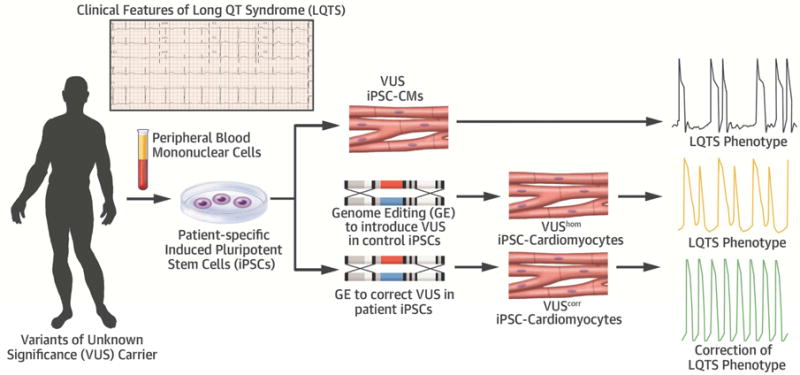Central Illustration. Patient-in-a-dish platform for elucidating VUS pathogenicity.

Patient-specific iPSC-CMs generated from a VUS (KCNH2T983I) carrier exhibited prolonged APD due to reduced IKr density compared to healthy control (black trace). Introduction of the homozygous variant in the healthy control iPSCs recapitulated a severe LQTS phenotype (orange trace) whereas correction of the VUS in patient iPSCs rescued the observed electrophysiological abnormalities (green trace). Thus genome editing of iPSC-CMs can potentially offer a unique precision medicine approach to decipher VUS pathogenicity in a dish. This robust approach may bring a major advancement in the care of LQTS patients to improve their quality of life and appropriately manage their risk of sudden death.
